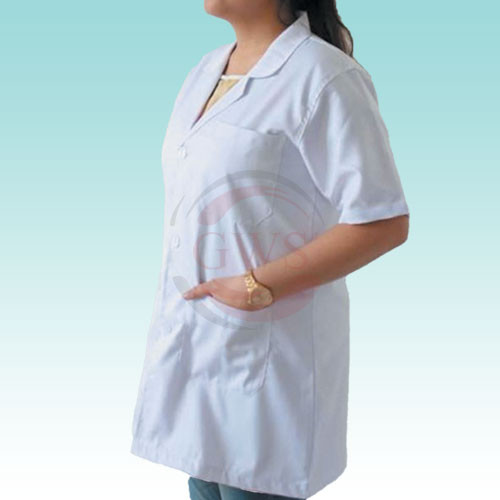Medical apron is an attire which has been worn for more than one century. It is white colored knee length overcoat which may be either full sleeved or half sleeved. It has become a symbol of the physician’s profession although various people from other professions also wear it, they include laboratory workers, nurses, scientists, physiotherapists, veterinarians, etc. The patient feels a sense of security and confidence when he or she sees a physician in white apron as it displays commitment. It helps in creating a good rapport with the patient. The white color signifies peace, this is a relaxing factor for patients as they usually come to hospitals to see doctors in a very stressful state.
For infectious disease exposure, apron doctors are specialized clothing used to prevent contact with hazardous substances. Its use is an essential part of infection control and prevention measures that protect workers from exposure to blood, body fluids, and other potentially infectious substances. It provides a physical barrier that prevents the body from coming in contact with infectious agents. It is used to reduce transmission diseases when other measures such as scientific controls and work practices cannot completely eliminate the communicable disease exposure.
IMPORTANCE OF MEDICAL APRONS IN INFECTION CONTROL MEASURES
There are various advantages of wearing a white apron in a health care setup. Firstly, it helps in easy identification by the patients, nurses and other related people in an area. It has been helpful to the doctors wearing it as it contains big and small pockets needed to carry essential things while visiting the patients during rounds, in the outpatient departments and emergency casualty departments. The coats provide an air insulation cover over the body surface, thus helping to keep the body warm in a cold environment.
The clinical coat acts as a physical barrier between physicians and the surrounding hospital environment. Normally the hospital or any healthcare setup is lodged by pathogenic microorganisms. Often they are resistant to multiple antibiotics, thus called as multi drug resistant organisms. They are a major threat for people working and visiting there. Contaminated human body with these MDRs may lead to an acquiring of a wide range of infections like pneumonia, skin infections, abscess, upper respiratory tract infection, COVID infection, tuberculosis, urinary tract infections, gastroenteritis, diarrhea, fungal infections on skin, etc. Thus it is essential to take proper measures to avoid getting in contact with these dreadful microorganisms. There are many protocols followed in order to avoid cross contamination with these pathogens. The white apron is among one of these precautions taken for infection control.
USE OF DISPOSABLE WHITE APRONS FOR PROTECTION FROM INFECTIONS
Pathogenic contaminants found on the work clothing of medical professionals are significant in cases of hospital-associated infections. Disposable, single-use plastic aprons are therefore recommended for general clinical use when close contact with the patient, materials or devices may lead to contamination of uniforms or other clothing with microorganisms and pathogens, or when there is a risk of contamination with blood or bodily fluids.
If there is the possibility of extensive splashing of blood or bodily fluids onto the skin or clothes of medical professionals, fluid-repellent full-body gowns should be worn. Currently, there are a number of disposable aprons available for daily usage by the doctors. They are non-sterile but chances of acquiring any infection with their usage are minimal since the contact time is very less.
CONCLUSION
The practice of wearing a medical apron has reduced the risk of acquiring contracting infections in a health care setting but at the same time is a risk factor for the patients themselves. Hence,it should be used with proper care and cleanliness.
